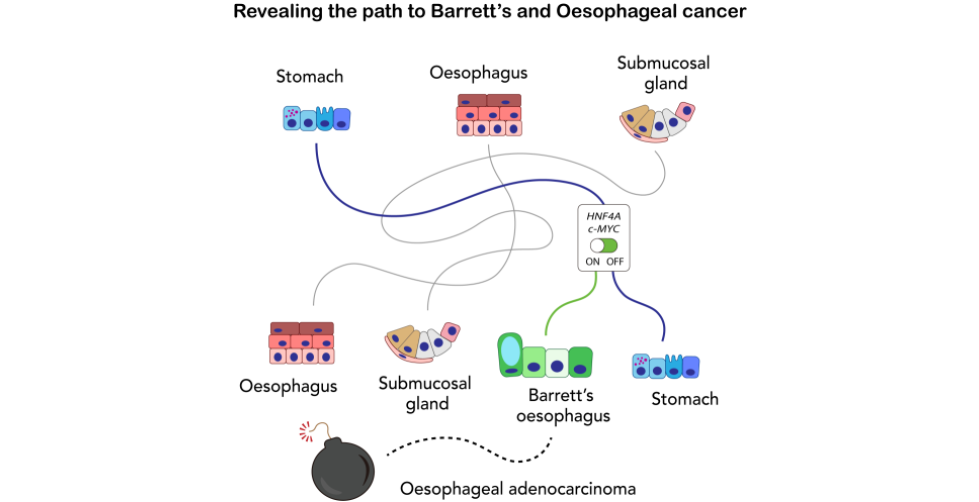Karol Nowicki-Osuch, IICD Associate Research Scientist, recently published a research article in Science. The study shed some light on the origin of Barrett’s esophagus, an abnormal change (metaplasia) in the esophagus structure often preceding esophageal adenocarcinoma. Although globally the less common subtype of esophageal cancer (squamous carcinoma being most common), adenocarcinoma cases are rapidly rising in the developed countries. However, it was unclear until now what the cellular origin of Barrett’s esophagus is.
A team led by Karol Nowicki-Osuch and John Lizhe Zhuang under the supervision of Professor Rebecca Fitzgerald from the University of Cambridge collaborated with Cambridge Biorepository for Translational Medicine to compare tissues from healthy and diseased individuals. They focused on two specific regions, the squamo-columnar junction between stomach and esophagus and the esophageal submucosal glands, both thought to harbor cells that give rise to Barrett’s esophagus. Using tissues from consenting organ donors was key to this study. Indeed, esophageal submucosal glands are absent in commonly used mouse models, thus limiting the research on the cellular origin of Barrett’s esophagus. Combining single-cell RNA sequencing and various lineage tracing methods, they established that Barrett’s esophagus originates from undifferentiated stomach cells through the transcription of c-MYC and HNF4A genes. Additionally, the study suggests that esophageal adenocarcinoma originated from undifferentiated Barrett’s esophagus cells despite the absence of metaplasia precursors. Overall, the authors hope that establishing the gastric origin of Barrett’s esophagus could provide patients with esophageal adenocarcinoma with novel diagnostic and therapeutic avenues, for instance, access to treatment usually reserved for stomach cancer patients.
Read more:
- Editorial in Science
- University of Cambridge Press Release

